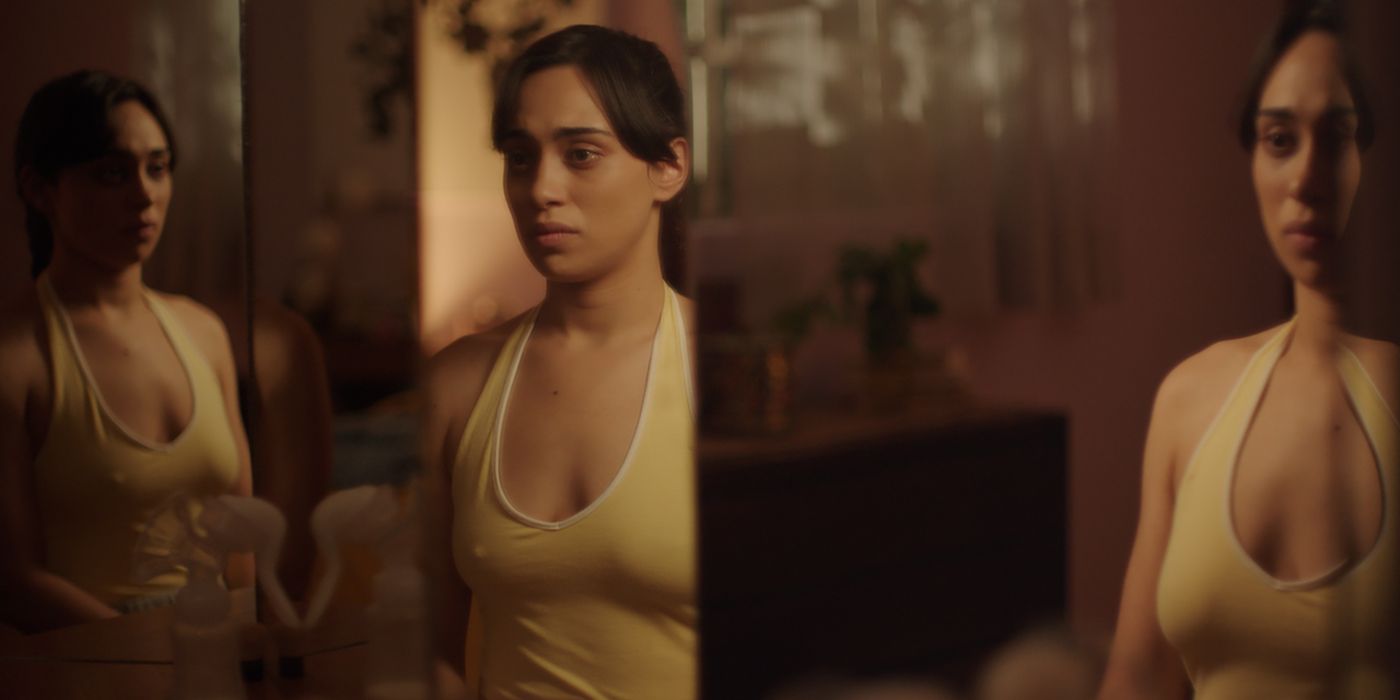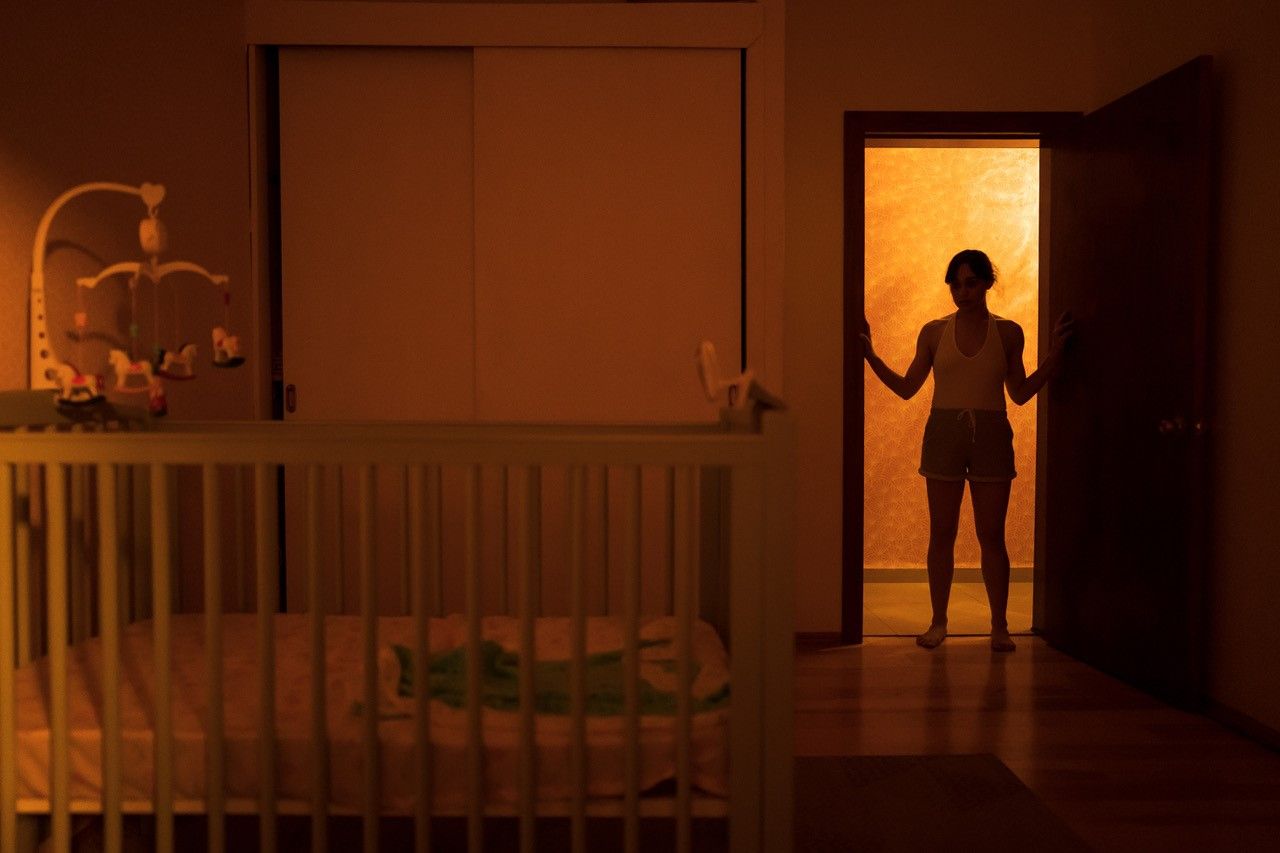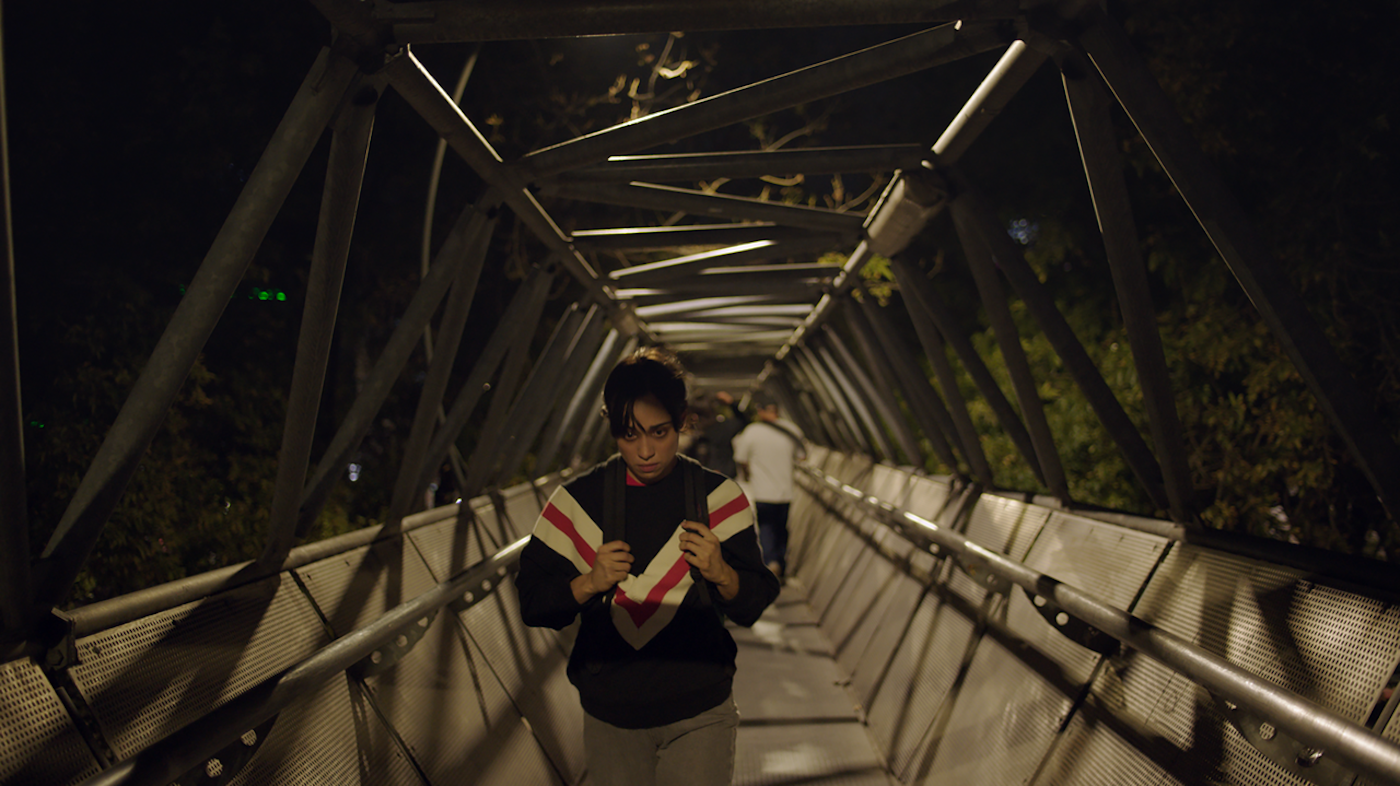Editor's Note: The following contains spoilers for Huesera: The Bone Woman.After making a splash in film festivals worldwide, Huesera: The Bone Woman comes to theaters, where everyone can enjoy the dreadful directorial feature debut of Mexican filmmaker Michelle Garza Cervera. However, while the body horror of Huesera is spine-chilling, the film’s ending might leave some viewers puzzled. That’s a normal reaction since Cervera’s debut feature is a complex allegory of motherhood, pregnancy, and the expectations society has for women. So, now that Huesera is finally available, let’s discuss the movie’s powerful message and how it ties up nicely with that mind-boggling ending.
What Is 'Huesera: The Bone Woman' About?
Huesera follows Valeria (Natalia Solián), a middle-class woman who’s trying her best to get pregnant. As the movie starts, we see Valeria praying for higher forces to help her become fertile. She also changes her intimate moments with her husband, Raúl (Alfonso Dosal), to improve the odds of becoming a mother. Huesera also shows the audience how Valeria is a skilled carpenter with a complex workshop set inside her apartment. It’s in this workshop that Valeira builds a crib for her prospective baby, pouring her energy into getting everything ready to receive a new family member.
At first glance, we could say Valeria dreams of becoming a mother and that getting pregnant should make her happier than ever. However, as soon as Valeria receives a positive pregnancy test, she starts to be tormented by the titular Bone Woman. The supernatural creature follows Valeria, putting her baby and her family in danger. Meanwhile, Valeria starts to have doubts about becoming a mother as she witnesses her world falling apart all around her. And as things get scarier, we also realize Valeria’s desire to become a mother might not come from a dream of her own but from what society expects her to become.
Valeria Is Reduced to Her Womb
While Huesera never addresses the issue directly, the movie constantly nods at Valeria’s distress, exploring the vicious social structures that push unwilling women towards pregnancy. Her sister, Vero (Sonia Couoh), points out how Valeria got pregnant quickly, as she would soon be too old to become a mother. And the fact this conversation happens naturally underlines how women’s bodies are subtly controlled to become procreation machines. It’s also expected from Valeria that she abandons her hobbies and everyday pleasures for the sake of her unborn child. Her workshop must become the child’s room, she must quit smoking, and even her meals should be regulated according to the baby’s needs. Once she becomes pregnant, Valeria loses control over her body, and her pleasure is no longer important to anyone. Her husband even refuses to have sex with her, as he becomes super protective and, in the process, reduces Valria to a giant womb. That’s why, day after day, it becomes more evident to Valeria that she might not really want to become a mother. Not coincidentally, the Bone Woman’s attacks become more frequent the closer Valeria gets to birth.
Who or What Is the Huesera, aka the Bone Woman?
The Bone Woman first shows up in Valeria’s visions soon after she receives the news of her pregnancy. As months go by, the creature’s attacks become more dangerous, while Valeria feels the weight of giving her individuality away for a baby. It’s no wonder that the Bone Woman shows up whenever Valeria feels conflicted about becoming a mother, as the creature manifests her doubt, fear, and rage. When Valeria must watch her sister’s children and realize how monstrous kids can be, the Bone Woman appears and forces her to hurt her nephews. When she’s paraded in a business dinner as a future mother, the Bone Woman pushes Valeria to set the baby’s crib on fire. And after the birth, the Bone Woman even feeds Valeria’s murderous impulses so that she puts the baby inside the fridge. At every twist and turn of the story, the Bone Woman makes Valeria do horrible things, but the supernatural menace is a reflection of the woman’s inner turmoil.
Valeria Becomes a Mother Because It's Expected of Her
As Huesera tells us, Valeria had a rebellious youth. She was a punk kid in a relationship with another woman, Octavia (Mayra Batalla), who dreamed about running away to the mountains and building a life for herself far from the city. However, after her brother died, Valeria decided to take up the burden of being a model daughter. Valeria broke up with her girlfriend, let her hair grow, went to college, and ultimately married a man and becomes a mother. Valeria ends up living not what she truly wants but what other people wish for her. Since her brother’s passing, Valeria has been trying to be what a woman should be and to feel happy by following archaic social roles. However, once she gets pregnant, her body changes too much and too fast for her to ignore how having a baby is a path from which she can never return.
There’s enough evidence in Huesera for viewers to understand how the supernatural menace is deeply connected to Valeria’s subconscious. The Bone Woman appears with broken bones and limbs turned in unnatural angles, mirroring Valeria’s addiction to cracking her fingers whenever she feels anxious. And since a pregnancy changes a woman’s body, displacing organs and making her bones move around to prepare for birth, the body horror of Huesera is also a supernatural representation of a natural process that can be nevertheless terrifying.
What Is the Meaning Behind the Bone Woman?
As her pregnancy evolves, Valeria gets back in touch with her old girlfriend, remembers her freedom before marriage, and mourns the time she spent in her defunct workshop. She doesn’t want to be a mother anymore, which makes the Bone Woman’s appearances more frequent. However, when she almost kills her newborn baby due to the Bone Woman, Valeria realizes she has to ask for help. Even though she doesn’t want the restraints of motherhood, she’s still responsible for the baby’s safety. As such, she decides to perform a dangerous black magic ritual to exorcize the entity.
During the ritual, Valeria is trapped in a dark dimension filled with nightmarish creatures and tasked with holding a blanket representing her baby. Before her psychedelic experience ends, Valeria sees the Bone Woman steal her blanket. And before the entity catches on fire, Valeria finally recognizes that the entity’s face is her own. The biggest danger for the baby is Valeria, who is consumed by her postpartum depression and is capable of putting the newborn’s life at risk.
'Huesera's Ending Sees Valeria Choose Her Own Path
The ritual successfully expels the Bone Woman because it propels Valeria to accept she is no good for her child. So, Valeria decides to end her marriage, leave her child to be raised by a loving father, and finally pursue the life she truly wants for herself. The last image from Valeria shows the woman saying goodbye to her ex-husband and child before vanishing with a suitcase and a toolbox. We don’t know if Valeria will get back with Octavia or if she will go live in the mountains. But for Valeria’s sake and her baby’s, the woman must accept that she doesn’t want to become a mother and only got pregnant to make other people happy. It might seem cruel to see a mother abandoning her child, but Huesera’s ending is extremely important for the movie’s message. After all, Cervera wants to use horror to explore how women are haunted by motherhood when they should actually feel free to choose whether they want to raise a child.
Huesera: The Bone Woman is out now in theaters. The movie comes to VOD on February 16.



